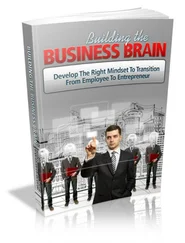Bruce Hood - The Domesticated Brain - A Pelican Introduction (Pelican Books)
Здесь есть возможность читать онлайн «Bruce Hood - The Domesticated Brain - A Pelican Introduction (Pelican Books)» весь текст электронной книги совершенно бесплатно (целиком полную версию без сокращений). В некоторых случаях можно слушать аудио, скачать через торрент в формате fb2 и присутствует краткое содержание. Год выпуска: 2014, ISBN: 2014, Издательство: Penguin Books Ltd, Жанр: Старинная литература, на английском языке. Описание произведения, (предисловие) а так же отзывы посетителей доступны на портале библиотеки ЛибКат.
- Название:The Domesticated Brain: A Pelican Introduction (Pelican Books)
- Автор:
- Издательство:Penguin Books Ltd
- Жанр:
- Год:2014
- ISBN:9780141974873
- Рейтинг книги:4 / 5. Голосов: 1
-
Избранное:Добавить в избранное
- Отзывы:
-
Ваша оценка:
- 80
- 1
- 2
- 3
- 4
- 5
The Domesticated Brain: A Pelican Introduction (Pelican Books): краткое содержание, описание и аннотация
Предлагаем к чтению аннотацию, описание, краткое содержание или предисловие (зависит от того, что написал сам автор книги «The Domesticated Brain: A Pelican Introduction (Pelican Books)»). Если вы не нашли необходимую информацию о книге — напишите в комментариях, мы постараемся отыскать её.
The Domesticated Brain: A Pelican Introduction (Pelican Books) — читать онлайн бесплатно полную книгу (весь текст) целиком
Ниже представлен текст книги, разбитый по страницам. Система сохранения места последней прочитанной страницы, позволяет с удобством читать онлайн бесплатно книгу «The Domesticated Brain: A Pelican Introduction (Pelican Books)», без необходимости каждый раз заново искать на чём Вы остановились. Поставьте закладку, и сможете в любой момент перейти на страницу, на которой закончили чтение.
Интервал:
Закладка:
Knowing what someone will do by reading their mind is one of the most powerful things our brains can do. When you know what someone else is thinking, you can manipulate and out-manoeuvre them for strategic advantage, just like Machiavelli. Even when you are not in competition with others, you still need the ability to know what they are thinking. Before language evolved, it would have been critical to understand what was on someone else’s mind so that you both could share the same perspective. You have to be able to put yourself in someone else’s situation in order to understand their intentions.
From sensation to culture, social mechanisms form a multi-layered system that is embedded in the newborn brain through natural selection but ultimately shaped and operated within a cultural environment. They are the tools that bind us together in a shared world. But there are other mechanisms that bind us together – we do more than share attention and interests, we also share emotions. From the very beginning, we are immersed in an emotional world where others make us feel happy or make us feel sad. The drive to have children may come from our selfish genes, but these genes also build the mechanisms that fuel our behaviour by providing feelings. Who we become is largely shaped by the emotions that motivate us, but these drives can be shaped by early experiences that leave a surprising legacy.

There was a time when it was acceptable to stare at individuals who, through the misfortune of the lottery of life, had been dealt a bum hand of cards when it came to their genes. Regarded as ‘freaks of Nature’, they came in all sorts of shapes and sizes – the victims of genetic abnormalities. These included dwarves and giants, people without limbs, bearded women, albinos and, most famously of all, the severely deformed Joseph Merrick, also known as The Elephant Man because of the massive tumours that disfigured his face and body. 1Although Merrick went on to lead a celebrity life, most of these people ended up in travelling circuses or freak shows where the public would pay to simply gawk at them.
In an attempt to understand such unfortunates, a widely held view at the time was that the birth defect was caused by some frightful event that traumatized the mother when she was pregnant. This idea, known as maternal impression, is thousands of years old and reflected a common belief that there was a correspondence between the nature of the birth defect and the supposed shock. A mother being accidentally burned during pregnancy may cause a patch of discoloured skin on the baby. Cleft palates or harelips occurred because a leaping hare had surprised the mother. Or, more commonly, the pregnant woman was so frightened by the sight of some deformity on another person that her unborn baby would be afflicted by the same defect. In the case of Joseph Merrick, it was claimed that a rogue fairground elephant startled his pregnant mother. 2These ludicrous ideas are consistent with magical thinking – the idea that there is a causal link between two events that are similar in appearance rather than an unrelated coincidence.
Although magical thinking has been largely abandoned in the West since the nineteenth century, maternal impression is still widely believed in many parts of the world today. 3Some countries have rituals, talismans and customs to ward off harm to protect the unborn child. In India, pregnant women avoid certain individuals such as barren women who may affect their foetus by casting the ‘evil eye’. 4While it may seem absurd that frightening a pregnant woman would have a permanent effect on her offspring, recent findings suggest that we may have been a little too hasty to dismiss maternal impression, or at least the susceptibility of unborn children to traumatic external events.
In this chapter we examine the possibility that early domestic environments not only shape what we learn, but also how we respond emotionally in terms of temperament. Temperament refers to the individual differences people have in their emotional responses. Some of us are more anxious whereas others are more outgoing. Some are more aggressive and others are more fearful. From the very beginning, babies differ in temperamental styles in that some cry more easily or startle suddenly whereas others are more laid-back and placid. Individually, we tend to be more like our parents when it comes to our emotional dispositions, which indicates this dimension of personality has a genetic contribution. However, early environments can also shape the development of temperament in ways that shape who we become as adults, and how well we adapt to domestication.
The day the world stood still
I can still vividly recall it as if it were yesterday. Those of a certain age will remember exactly where they were on that fateful day in 2001. It was a September afternoon in the UK but a bright, sunny morning in New York with crisp blue skies. Colleagues knew that I had a television in my office and had come in to watch the terrifying news unfolding. Two planes had been flown into the World Trade Center and now there was dense smoke billowing out of both. People were jumping to their deaths. If you saw the footage, then you, like me, will probably still have those events emblazoned on your memory as the world changed for ever.
For some, these recollections have become flashbulb memories , as if the scene were lit up in harsh lighting to capture everything – even trivial details of little relevance. Our memories can be supercharged with detail when we experience something terrifying. This is because we become more alert and attentive, on the lookout for danger as our hippocampus, the seahorse-shaped repository for long-term memories in each of the temporal lobes, receives input from the amygdala – a structure the size of an almond, also in each temporal lobe, that is active when you laugh, cry and scream in terror. 5They also don’t let you forget.
Experiences that eventually become memories start out as patterns of neural firing or traces that come flooding into the brain. Raw sensory input is interpreted into representations and given meaning. This in turn updates and changes the knowledge we have about the world by forming memories. Whether details become consolidated into the memory stores of the hippocampus depends on filtering mechanisms that are regulated by the action of neurotransmitters released by the amygdala during surprising, arousing or rewarding events. The neurotransmitters are the molecules that trigger activity in the connecting gaps between neurons. Flashbulb memories stimulate the amygdala to invigorate the activity of the hippocampus, thereby enhancing the memory trace for those events that move us the most. 6As the world watched in helpless shock, a generation would never forget what they saw. But even some from the next generation of unborn babies were left with the legacy of that terrible day.
Post-traumatic stress disorder (PTSD) is an anxiety condition that appears weeks after traumatic events such as rape, battle and other acts of violence. It is characterized by recurrent dreams, flashbacks and flashbulb memories, as if the victim is haunted by the past. After witnessing 9/11, one in five New York residents who lived closest to the World Trade Center suffered from PTSD. Rachel Yehuda, a New York psychiatrist, followed up a sample of pregnant women from this group. She found that these women had abnormal levels of cortisol in their saliva – a hormone that is released as a natural response to stress but depleted in individuals with PTSD. 7Different hormones and neurotransmitters form part of an elaborate signalling system that the brain uses to activate different functions. Some have general effects whereas others seem to be more specific in the roles they play.
Читать дальшеИнтервал:
Закладка:
Похожие книги на «The Domesticated Brain: A Pelican Introduction (Pelican Books)»
Представляем Вашему вниманию похожие книги на «The Domesticated Brain: A Pelican Introduction (Pelican Books)» списком для выбора. Мы отобрали схожую по названию и смыслу литературу в надежде предоставить читателям больше вариантов отыскать новые, интересные, ещё непрочитанные произведения.
Обсуждение, отзывы о книге «The Domesticated Brain: A Pelican Introduction (Pelican Books)» и просто собственные мнения читателей. Оставьте ваши комментарии, напишите, что Вы думаете о произведении, его смысле или главных героях. Укажите что конкретно понравилось, а что нет, и почему Вы так считаете.











